MikroTik is a Latvian company that started with WISP, Wireless Internet Service Provider, equipment, but has moved into making enterprise level network routers and switches. They strive to make quality gear at a low price point as compared to other companies like Cisco and Juniper that one could argue charge an exceedingly high premium for their equipment. I have a previous post with a podcast interview with a networking consultant that specializes in MikroTik gear along with the other big manufacturers, and he goes into detail on their offerings and company history.
Being my previous Gigabit router, which was prosumer grade, hadn’t had a firmware update since 2020, it was time to make a change. And I didn’t need wireless as I’m still using an Ubiquiti access point for WiFi which is still receiving regular security updates. So I settled on the MikroTik Hex S below with 5 Gigabit Ethernet ports and a 1.25 Gigabit SFP cage in case I switch to Bluepeak fiber in the near future (I wouldn’t use their Eero gear owned by Amazon).
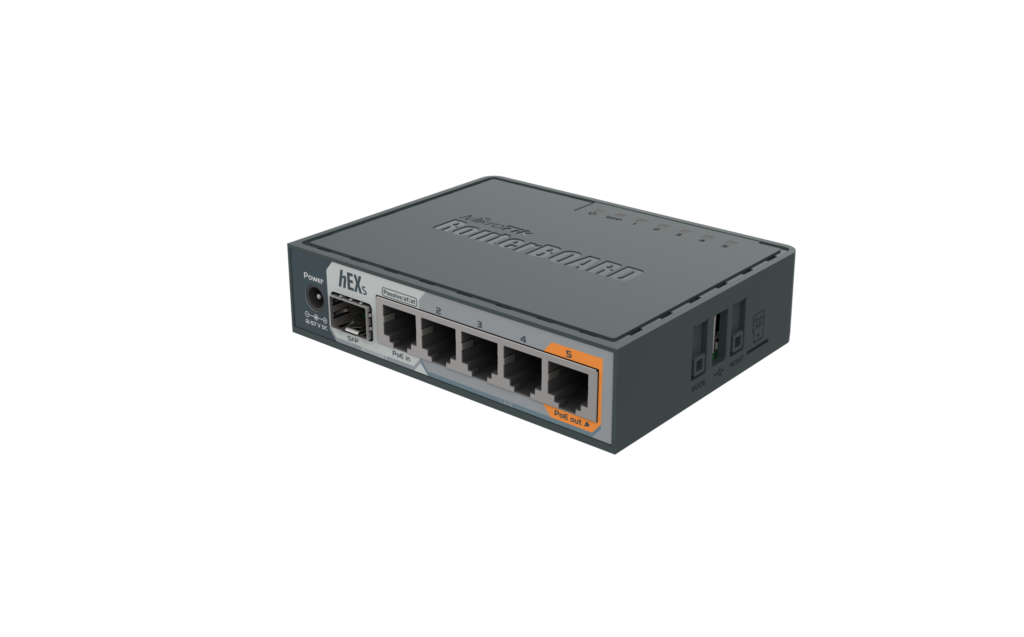
Now MikroTik runs a Linux based OS called Router OS which they maintain themselves with regular updates and prompt security fixes, and the interesting thing is when you get equipment you get access to all the features as long as your hardware can support it, but this also means it’s a bit more like enterprise level gear so setup requires you to have some networking understanding and to roll up your sleeves to learn their interface or CLI. But you also get a lot of configuration options and a firewall based on iptables you can configure as desired. And they have a wonderful program called WinBox that can connect to the router via MAC address or IP and though windows based it runs in Wine under Linux or Mac (there is also an Android app that looks feature complete). The CLI terminal within WinBox below shows that their interface is color coded and has tab functionality to list available options as well as alerting you if you made an input error.
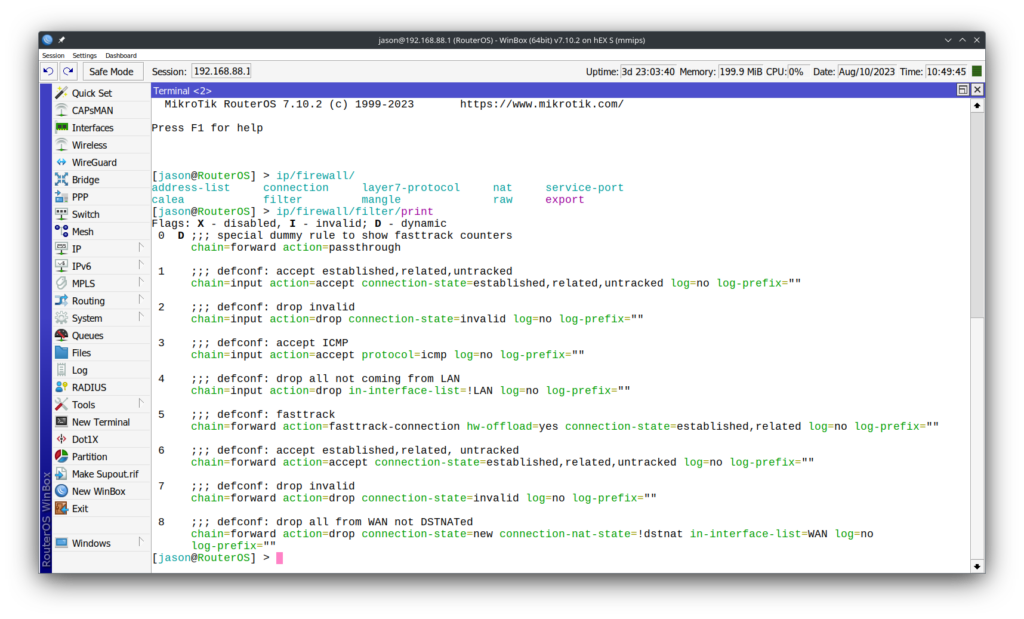
Or you can use the graphical WinBox interface which is also quite good (below), and they also have a web interface or direct SSH connection.
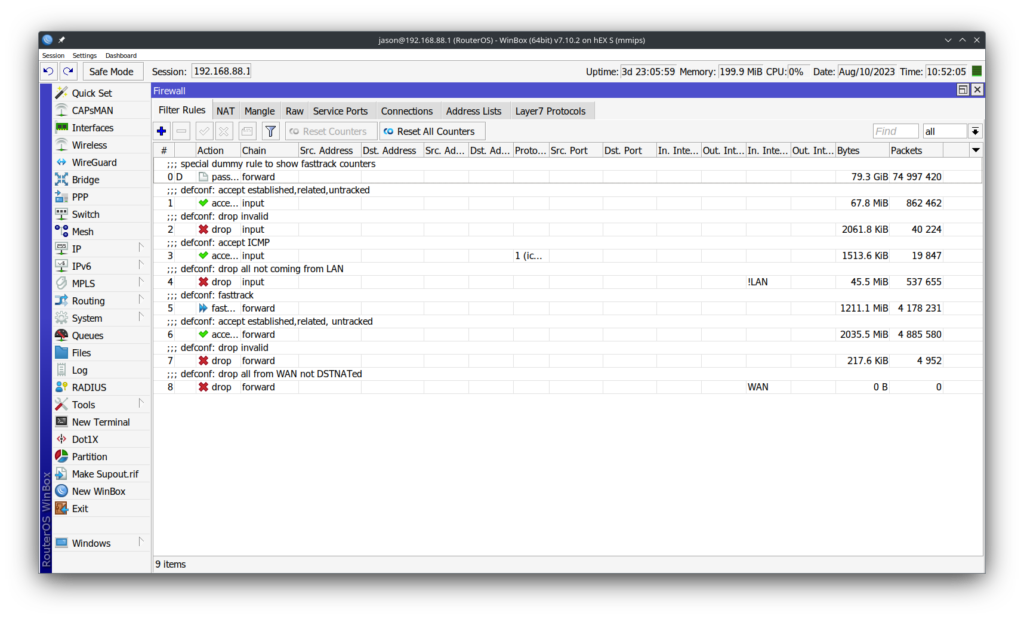
So far it wasn’t too difficult to setup the new router and things appear to be in order from an aggressive remote nmap scan to make sure things are properly locked down. And checking and updating the OS is extremely easy, making backups, restoring… Overall, I’m incredibly impressed with router and their Router OS. Worth noting, this device is also supported by OpenWRT if I wanted to ever try out their firmware being actively developed. A couple other things is that if you get an ARM based router (mine is MMIPS), they have support for docker containers and running ad blockers and other services directly on your router, though I have Raspberry Pis for my Pi-Hole/Unbound DNS servers, Wireguard VPN, and other docker services. But if you have a bit more of a home lab setup and faster fiber internet, they also have a compelling router with a lot of capability and not too expensive, the MikroTik RB5009UG+S+IN at MSRP $219, and pay attention to the 10 Gigabit SFP+ cage and a 2.5 Gigabit port with the remaining Gigabit ports (much faster options are available if you have a use case).
The board features 9 wired ports and a full-sized USB 3.0. Seven of the ports are Gigabit Ethernet, another one is 2.5 Gigabit Ethernet, and the last one is a 10G SFP+ cage. All the ports are connected to a powerful Marvell Amethyst family switch-chip with a 10 Gbps full-duplex line leading to the Marvell Armada Quad-core ARMv8 1.4 GHz CPU. Both CPU and the switch-chip are located on the bottom of the board – so the case acts as a massive heat-sink!
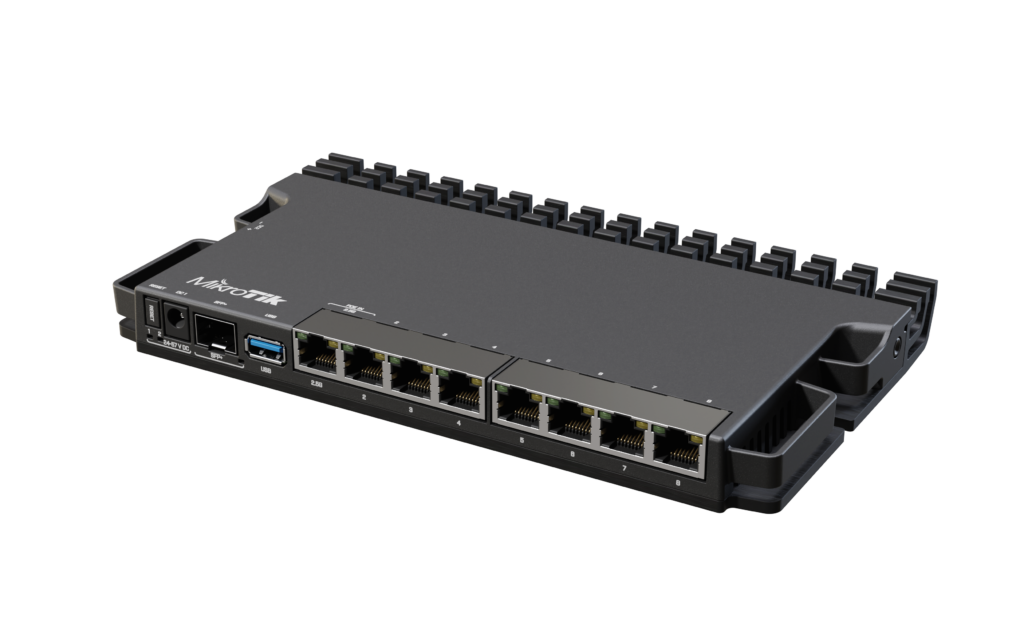
And if you’re looking at a combo home router with WiFi 6, the MikroTik hAP ax3 is a compelling product at only MSRP $139 with a 2.5 Gigabit port and the rest Gigabit, ARM CPU…
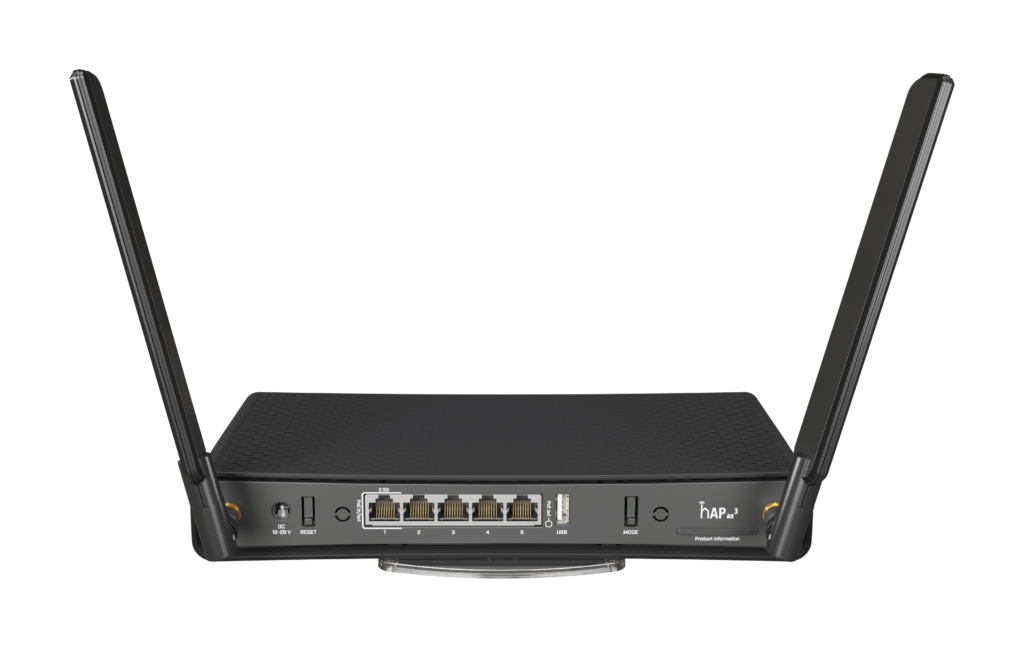
So if considering routers, switches or access points for you home or business, consider the quality offerings of MikroTik and save yourself some serious money over other offerings, and rest assured that current products are guaranteed five years of support, though they usually are supported much longer. And you’ll get enterprise level configurability and features.